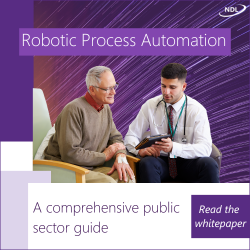
CURRENTLY FOR REVIEW
The city council is taking a new approach to building up its data picture, writes Philip Maguire, CEO of Inakalum
Possessing a rich store of data, as much of it as possible in real time, and bringing a connected place to life go hand in hand, according to Jenny Nelson.
Newcastle City Council’s head of ICT and digital transformation emphasised the importance of this in a presentation at the recent UKAuthority Smart and Connected Places 2022 conference, relating it to the work done by Inakalum, a specialist in building geospatial databases for local authorities.
“Newcastle has always taken a place based approach on anything we want to do in building a smart city,” she said. “It’s not just within the local authority but with partners from the public, private and academic sectors. We have to do things together to get better as a city, and that applies to the use of data to help it flow.”
The council is aiming to build a complete picture of data across the city, with three main objectives.
Citizen experience, efficiency, investment
First is to improve the experiences of citizens. Nelson cited the example of the How Busy is Toon website and app which monitors footfall in the city centre to provide the public with guidance on avoiding crowds, and said similar work is going on to increase the usage of public transport and provide information such as the location of the nearest public bin or bench.
Second is to improve the efficiency of services, supporting operations such as the maintenance of council property and street assets and public places with a single version of the truth. This is intended to help it target resources more effectively and reduce duplication and liabilities, and there is a customer service element in helping the public to get things right first time in dealing with the council. There is an example of the latter in providing information to reduce the number of invalid planning applications.
Third is to collect and share data to support inward investment, provide a strong infrastructure for smart places and make Newcastle a testbed for solutions.
Much of the work is supported by data from the Urban Observatory, run by Newcastle University to provide what is described as the largest set of publicly available real time urban data in the UK. It takes data from sources including smart buildings, buses, traffic cameras and air quality stations to provide 10,000 observations every minute on 4,000 data streams across over 30 sensor platforms, along with more than 65 variables, downloads and APIs.
Pushing for change
“We know citizens and local community groups are accessing the data to champion causes and push for changes,” Nelson said. “It’s a fantastic asset for the city.”
This reflects the growing recognition of the importance of geospatial data – which can be any set of data with geo co-ordinates to render on a map – for public services. It can be applied to a range of amenities – such as parks, recycling centres, bike parking points, council offices and libraries – and street assets such as lampposts, traffic lights, street furniture, manholes, gullies and litter bins.
Inakalum has gathered its richest source of geospatial data from its work with Newcastle, mapping over 30,000 data points with high quality digital images to contribute to the council’s programme.
It has employed local people to walk the streets of selected parts of the city to collect images of the amenities and assets that they enter into its cloud database through a smartphone app. This approach helps it to access places that other technologies – such as satellite, drones, drive-by tech and web scraping – cannot reach as the people providing the data can get around barriers and closer up to provide more detail.
The data can then be made available through its smartphone app, which can be used to search for not just public but private sector amenities, with keyword and voice searches and the ability to provide multi-language voice and text support.
Detailed mapping
This has enabled it to build a detailed map of public services, amenities, parking points, places of interest, 5G infrastructure, gullies and trees, and restaurants around the city centre, along with the capacity to create a polygon of a chosen area and export relevant contact details into a CSV file. It can also create heat map visualisations that can be linked with the other data to build an understanding of the city’s environmental ecosystem.
It can also be used to explore other factors: the company has begun a project in London to test the strength of mobile signals from different network operators, with its data suppliers pausing at every 30 paces to test the signal strength. This provides the potential for the data to be made available through the smartphone app.
These efforts are demonstrating the value in this approach to gathering the data, and making a big contribution to Newcastle’s efforts to make itself a leading smart city.
Nelson summed up the importance of the overall effort in Newcastle with the point that: “The more we know about the city and place in real time the better. We can make more intelligent, smart decisions and interventions, and make a positive impact in the city.”
CALL TO ACTION





